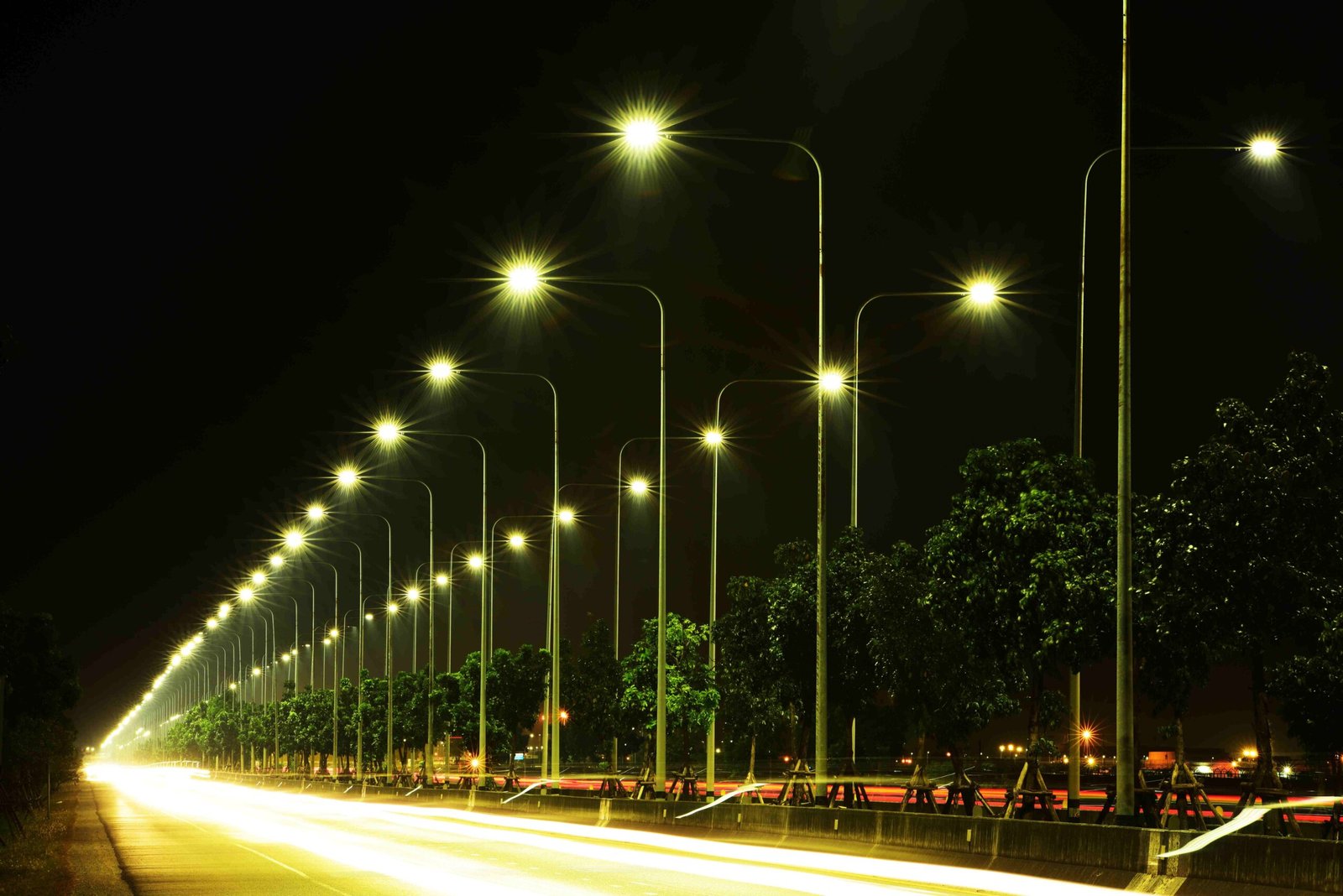

National Highways, the lifelines of India’s vast road network, play a crucial role in transporting people and goods across the country. However, ensuring safety on these highways, especially during nighttime travel, poses a significant concern. Street lighting plays a vital role in this; however not devoid of challenges. Lt. Col. Sunil Purohit, Head, Operations, Maple Highways, looks at the lighting standards, current status of highway street lighting, factors influencing lighting decisions and the challenges in operating and maintaining highway lighting. Lt. Col. Purohit has over 15 years of experience in the operations of road assets across the country.
The highway lighting challenges need to be seen in the light of the fact that Highways in India spur residential growth and ribbon developments where the highways get extended. It is also equally true that serious attention is not paid to segregate local traffic from highway traffic thereby creating numerous zones of conflicts at all times.
Lighting Standards and Practices on National Highways in India
National Highways in India follow guidelines set by the Bureau of Indian Standards (BIS) in the code IS 1944: Code of Practice for Lighting of Public Thoroughfares. This code is divided into various parts, with specific sections relevant to National Highways being:
- a) IS 1944-1 & 2 (1970): This covers lighting for main and secondary roads (Group A). It emphasizes principles like:
- i) Drivers should have clear visibility without needing headlights.
- ii) Lighting should appear continuous and uniform, with special attention to critical areas like bends, junctions,
and bridges.
iii) Signage and other features should be conspicuous without glare.
- b) IS 1944-7 (1981): This part focuses on lighting for roads with special requirements (Group F), which could include some National Highways with unique characteristics. These standards establish a framework for lighting design based on factors like:
- i) Traffic Volume: Highways with heavier traffic typically require higher illumination levels compared to those with lower traffic density
- ii) Road Geometry: Curves, junctions, and flyovers often necessitate additional lighting for improved visibility
iii) Surrounding Environment: The presence of built-up areas, factories, or open spaces can influence lighting design choices
- c) Key Considerations for Street Lighting:
- i) Illumination Levels: The standards specify minimum illumination levels for different categories of National Highways. These levels are measured in lux (lumens per square meter).
- ii) Uniformity: Lighting should be consistent throughout the highway length to avoid sudden changes in brightness that can affect driver vision.
iii) Glare Control: Lighting design should minimize glare from luminaires to ensure driver comfort and safety.
- iv) Spacing and Mounting Height: Standards provide recommendations for the spacing and mounting height of light poles to achieve optimal illumination and uniformity.
- v) Energy Efficiency: While not explicitly mandated, there is a growing emphasis on using energy-efficient lighting solutions like LED fixtures on National Highways.
It’s however important to note that these are general guidelines. The final design and implementation of lighting systems on NHs are determined by engineers considering the specific characteristics of each stretch, the approved detailed project report, and the concession agreement.
Current Status of Street Lighting on National Highways
Street lighting on National Highways in India presents a mixed picture. A few important issues are: –
Extent of Coverage:
- a) Currently, not all National Highways in India have street lighting. This is primarily due to poor planning, uncontrolled ribbon development, budgetary constraints and prioritization based on traffic volume and safety concerns. As a result, focus is predominantly on high-traffic sections, particularly four-lane and six-lane highways. These include areas near major cities, industrial corridors, and critical junctions.
- b) Many National Highways, especially two-lane ones in rural areas, have limited or no street lighting. This can significantly impact nighttime visibility and safety for drivers.
Factors Influencing Lighting Decisions:
- a) Traffic Volume: Higher traffic volume is a major factor influencing the decision to install street lighting. Highways with heavier traffic flow are prioritized for safety reasons.
- b) Accident Rates: Accident-prone locations are often targeted for improved lighting infrastructure to enhance visibility and potentially reduce accidents.
- c) Infrastructure Projects: New highway construction projects typically include provisions for street lighting in their design.
- d) Budgetary Constraints: Limited resources allocated for NH maintenance may restrict the expansion of street lighting to all stretches.
Current Challenges in operating and maintaining Street Lighting on National Highways:
The prominent challenges highlight the gaps between policy and on-ground realities.
Scope Ambiguity and Cost Pressures
While the tendering system clarifies initial scope, demands for additional lighting post-bid create friction. Concessionaires struggle to source quality materials at government-mandated rates, compromising quality. Furthermore, current agreements are silent on reimbursement for power, fuel, and operation & maintenance (O&M) costs, burdening concessionaires and penalizing them for non-functional lights.
Ribbon Development and Power Acquisition Delays
Unlike developed nations, highway development in India spurs unplanned settlements. This leads to continuous demands for additional lighting beyond the planned scope. Additionally, obtaining power connections is a time-consuming and expensive process, often exceeding a year.
Erratic Power Supply and High Energy Costs
Unreliable power supply, especially in rural areas, hampers the functionality of lighting systems. Agreements mandate a high uptime (90%), but frequent disruptions make it difficult to achieve. Standby generators are impractical due to project spread and theft risks. Ironically, highway lighting is categorized as a commercial activity, attracting high tariffs compared to the subsidized rates for municipal lighting. This discourages a shift to solar power, further burdened by low feed-in tariffs.
Theft and Vandalism: A Persistent Threat
Theft and vandalism of lighting infrastructure pose a significant financial burden. Up to 15% of electrical operating expenses go towards replacing stolen or damaged assets, exceeding international averages. Underpasses and inspection covers are particularly vulnerable.
Power Theft and the Concessionaire’s Dilemma
Power theft by highway establishments creates a precarious situation. Ignoring it risks penalties for reselling power, while complaining might endanger project staff. Switching off power to such locations breaches agreements and attracts further penalties.
Obsolete Technology and Infrastructure Constraints
Despite a government phase-out plan, many highways continue to use inefficient High-Pressure Sodium Vapour (HPSV) lamps. Agreements with highway departments provide no incentive for concessionaires to transition to energy-saving LEDs due to upfront costs. Furthermore, the rigidity of IRC codes, updated only every ten years, hinders the adoption of newer technologies during the project’s concession period (20-30 years).
Multi-Stakeholder Coordination: A Challenge
Effective management requires collaboration between NHAI, contractors, local authorities, and state governments. However, a lack of support from state machinery, despite signed “State Support Agreements,” hinders smooth collaboration. District and division offices often feign ignorance and shirk their responsibilities.
Billing Issues and Remote Locations
Many electricity boards have not transitioned to online billing, leading to erratic receipt of physical bills due to remote plaza locations. This delays bill payments and incurs penalties.
The Future
With advancements in technology clubbed with vast tranches of lands adjoining the highways available, potential developments might encompass mandatory: –
LED Technology: Shifting towards energy-efficient LED lighting can reduce maintenance costs and improve overall efficiency.
Solar-powered Lighting: In remote areas with unreliable power supply, solar-powered lighting systems offer a viable alternative.
Smart Lighting Solutions: Advanced systems with remote monitoring and control capabilities can potentially optimize lighting usage and reduce energy consumption.
Cost Optimization: Streetlights need to be rationalized given their environmental impact to urban locations and conflict zones. Street lighting to access controlled expressways is best avoided. Further for rural areas, given the challenges a shift to retroreflective material is a better option
 TrafficInfraTech Magazine Linking People Places & Progress
TrafficInfraTech Magazine Linking People Places & Progress